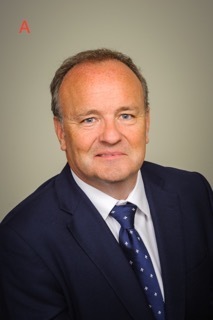From the July 2017 issue of HealthCare Business News magazine
HealthCare Business News spoke with John Finlay, the vice president of pathology solutions at Faxitron.
HCB News: For readers who are not already familiar with Faxitron, can you give us a brief overview of the company's history and the solutions it provides?
John Finlay: We’ve been the industry leader in cabinet X-ray systems for specimen radiography, research and NDT applications for more than 50 years. As the pioneer in cabinet X-ray imaging technology and the global leader in specimen radiography and irradiation, Faxitron continues to develop innovative products and solutions that enable physicians and researchers to achieve more every day. Faxitron systems are used in institutions all over the world, including all top 10 U.S. cancer centers.
HCB News: Your PathVision X-ray cabinet seems especially relevant in the context of women's health. Can you tell us what makes this system different from other pathology solutions on the market?
JF: PathVision provides immediate access to high-resolution X-ray images, which helps to improve the accuracy and speed of diagnosis. Specimens are sent directly from the OR to pathology where they are imaged by the PathVision. Imaging a specimen prior to sectioning greatly reduces turnaround time. PathVision helps to identify exactly where the tumor is at the time of dissection. Without PathVision, there is an element of guesswork in identifying the location of the tumor. Typically, 45 sections would be submitted with a lumpectomy. With PathVision, it’s about 10. In addition, facilities that use radioactive seeds as a method of localization benefit from being able to confirm the exact location of the seed quickly, facilitating a much faster retrieval in the pathology lab. With PathVision, pathology, surgery and radiology can work together seamlessly with the goal of avoiding a second surgery and improving the standard of patient care.
HCB News: In terms of size and patient demographic, what types of facilities are most likely to benefit from a system like PathVision?
JF: PathVision is used by global luminaries such as MD Anderson as well as leading university hospitals, but we also have many smaller regional and community hospitals that are seeing the benefits of this technology. PathVision not only provides powerful clinical benefits, but the speed and accuracy of the imaging system means that many facilities report a significant savings in time and money.
HCB News: What kind of feedback do you get from new customers who begin using the system?
JF:Our customers tell us that PathVision allows them to provide a much faster diagnosis for their patients, which reduces patient stress and anxiety. This has a big impact on improving overall patient care. For our customers, PathVision is an essential system that improves efficiency, and overall makes the job of the pathologist and pathology assistant much easier.
